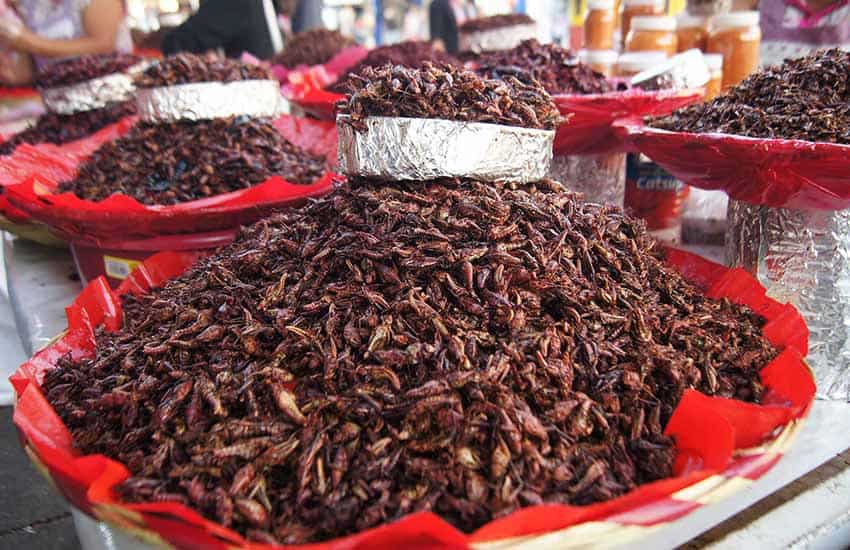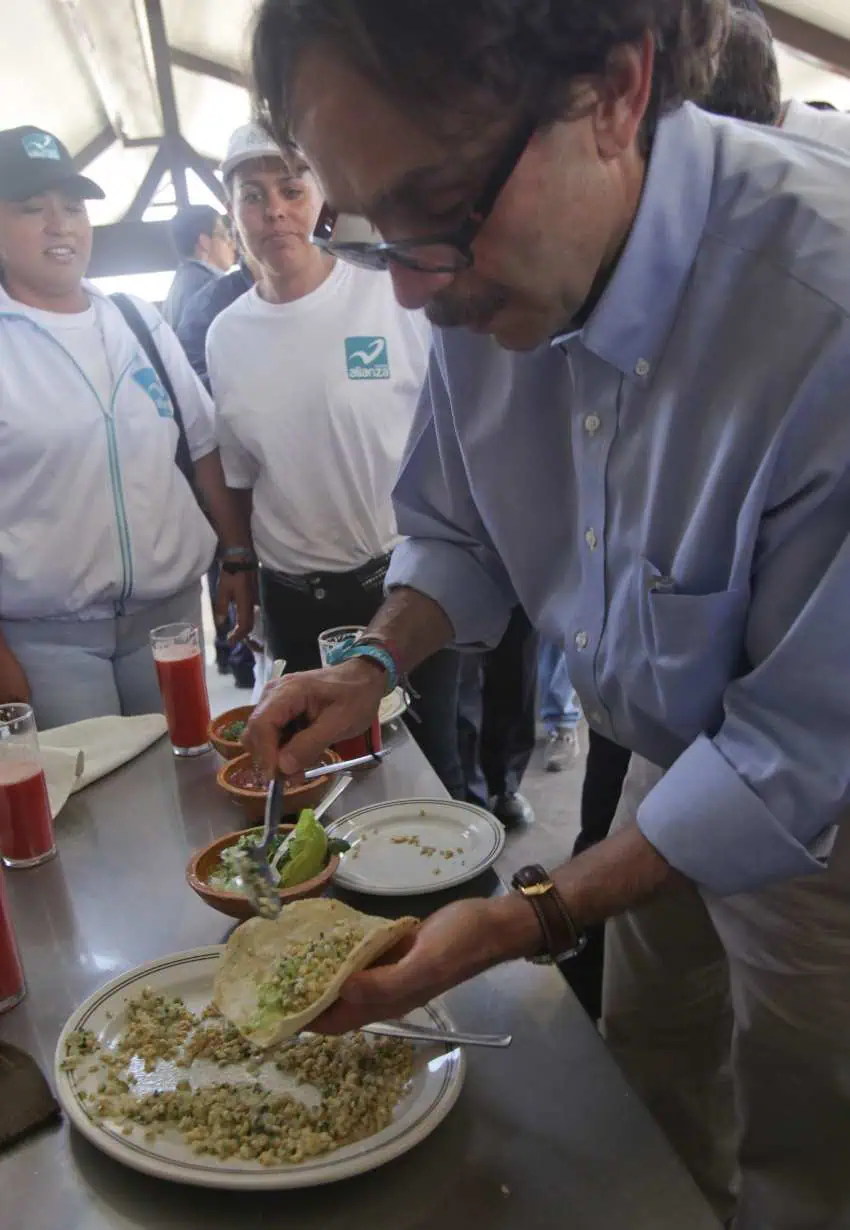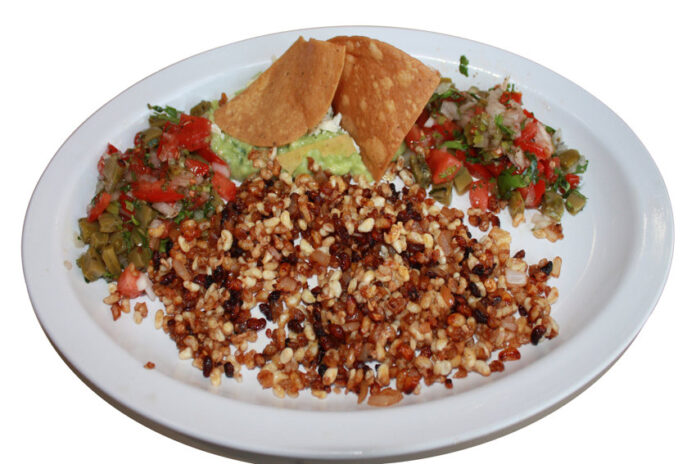One of the most overlooked chapters in Mexican cuisine is the one about insects.
However, it’s important to clarify a common misconception: not all Mexicans have eaten insects, and it’s not true that we all love them because it’s in our DNA. I’ve witnessed friends and family become visibly distressed after trying crickets, worms or tacos filled with escamoles — some have even turned pale, teetered on the brink of fainting, cried or rushed to the bathroom after a single bite.

I must confess, if you present me with any insect, I’ll give it a try, but not all insects are my favorites. I haven’t tasted them all, and I’m not the kind of person who snacks on a bag of grasshoppers every day, even though I do enjoy them.
For me, the best way to eat insects is when they’re hidden: in a sauce, tucked away in my tortilla, ground into a mole, or blended into the rim of my mezcalita. However, as soon as I see an insect with its tiny legs lying dead on top of my guacamole, I get the ñañaras (a feeling of disgust or the creepy-crawlies. It’s also one of the most fun words to say. In Cuba and the Dominican Republic, it actually refers to a skin wound.)
Escamoles: Mexican caviar
Escamoles are the larvae of ants, and they offer a unique culinary experience. I have no hesitation about starting my meal with these buttery delicacies. Eating escamoles is a luxurious experience, as they have a flavor reminiscent of young corn, with a hint of butteriness and nuttiness. Their taste is delicate and complex, making them a truly special dish.
Is it really like caviar?
Yes, it is! Since pre-Hispanic times, the harvesting of escamolera ants has been taken very seriously. These ants build their nests underground, typically at the base of maguey plants, in cactus patches, or near pirul trees. The collection season occurs during March and April, and escamolera ants can be quite aggressive, making the harvesting process challenging. That’s why a kilogram can cost between 1,500 and 2,500 pesos.

Some legends suggest that escamoles were once a luxury food reserved for Tlatoanis (emperors), warriors, nobles, and priests. However, this seems somewhat exaggerated. With maguey plants and cactus everywhere, it’s hard to believe that it wasn’t staple food. Pre-Hispanic cultures regularly included around 95 types of edible insects in their diet. While we don’t know the frequency or quantity of their consumption, it is known that the Aztecs did eat escamoles.
Actually, the word escamoles comes from the Nahuatl words azcatl (ant) and molli (sauce or ground mixture).
Escamoles in colonial times
Unlike many other ingredients we’ve talked about, escamoles weren’t banned during colonial times. On the contrary—many convent and household recipe books included them in dishes like moles, mixiotes, tamales, or cooked with nopales.
Escamoles today
View this post on Instagram
Escamoles have become a gourmet dish, popular in Mexico City. You can find them in many places, but here are four of my favorite spots where I’ve personally tried them:
1. El Cardenal. El Cardenal has several branches throughout the city. The buttery escamoles are divine and likely one of the most traditional way to enjoy them. Tip: Be sure to try their moles—they’re excellent—and always opt for seasonal dishes.
2. La Cocina de San Juan. If insects give you the heebie-jeebies, this may not be the place for you. They serve tacos made with scorpions, spiders, jumiles, and of course escamoles. If you are fearless, and find yourself at La Cocina de San Juan try the wild boar mixiote. It’s incredible and will make you feel like a true Aztec emperor.
3. Limosneros – If you find yourself in the Historic Center, this is the restaurant to visit. Few establishments are as dedicated as Limosneros to reviving traditional ingredients, techniques, and dishes while adding a modern twist. I highly recommend everything on their menu, but the cuitlacoche taco is a must-try.
4. Restaurante Máximo – The escamol crostini is outstanding. This restaurant is ideal for anyone seeking fine dining in CDMX. Be sure to try the Wagyu beef tongue with mole and the crab tlayuda; both are excellent examples of Mexican recipes with a haute cuisine twist. It’s also a wonderful place to take a break from all the corn and salsa-heavy dishes.

If you have more time, I urge you to visit the state of Hidalgo, where nearly every restaurant in season serves a delicious traditional dish of escamoles.
Final reason to eat escamoles
Escamoles are an excellent source of protein, containing more than your average protein shake. In fact, 100 grams of escamoles provide approximately 45 grams of protein, surpassing the protein content found in beef or chicken. Additionally, they are rich in B-vitamins, iron, calcium and phosphorus, all of which promote bone and brain health.
Did I convince you?
Amigos, I understand — eating insects isn’t for everyone. It can be challenging to look down at your tortilla and see a bunch of bugs and then pretend it’s the most appetizing bite of your life. However, I really encourage you to try escamoles. They resemble risotto and taste like butter. The experience isn’t as shocking as you might expect; still, it’s a little bit exotic.
I’d love to hear your thoughts. Are you willing to try them? Have you already tried them? How was it?
María Meléndez is a Mexico City food blogger and influencer.
